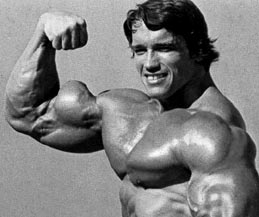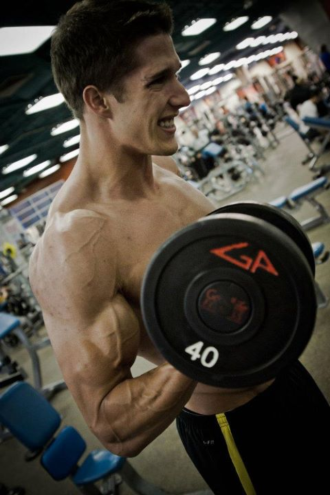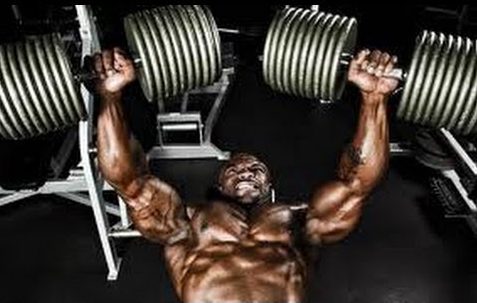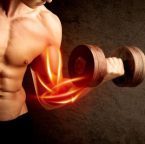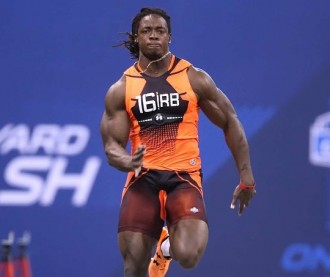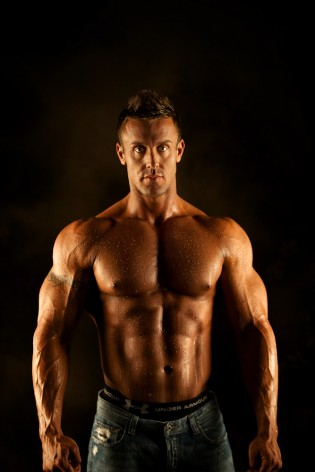Vascularity. It’s easily one of the more talked about aspects of the fitness and bodybuilding world. It’s something that virtually all weightlifters, bodybuilders, and all-around fitness enthusiasts strive for to some degree – whether they’re just starting or have already been in the field for years at a time.
For the beginner-type out there that isn’t aware of what “being vascular” means, simply put, vascularity is the process by which your veins are more prominently shown through the skin.
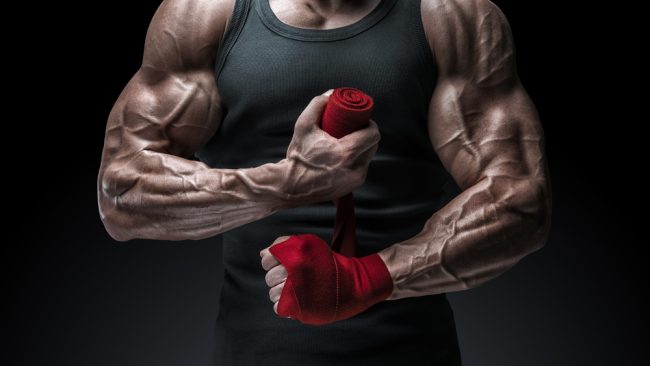
Vascularity, while talked about primarily in the weightlifter space, you often see shown throughout media, from comic-book characters to action heroes in movies and tv. It’s arguably because of this idealistic representation that so many people often want a more vascular look in the first place.
In this overview, we’ll go into what vascularity is as well as what can cause it to appear. We’ll also go over the different ways and methods to increase its appearance in the body.
Vascularity Explained – What Is It?
Essentially, when it comes to the body, there are many multiple types of veins that we have to deal with. These range from the various pulmonary arterial veins, which are used to channel oxygenated blood from the lungs to the heart, to the systemic veins, which make up a person’s systemic circuit and transfer blood throughout the body from the heart to the deep and superficial veins.
In this case, in the world of fitness, it is the superficial veins that are the most commonly referenced when it comes to improving vascularity. Superficial veins are considered the smallest and most distant of the vein family, being the closest to the skin’s surface. These veins are different from all other veins as they aren’t directly tied with a nearby artery, instead often being located in the fatty layer just under the skin. These veins, while not essential for the body’s overall health, are very important when it comes to expediting the transfer of heat from the body to the skin, inducing sweating.
When most people refer to vascularity, they are specifically referring to the process of making the superficial veins more pronounced and easily visible. These veins, while not particularly deep, can be quite extensive around the body. This includes the arms, legs, and shoulders as well as the back, chest, and neck.
Vascularity can be seen in all body types (from a more gymnast-based one to the stereotypical bodybuilder) though the key markers tend to be a high level of physical conditioning and a low amount of available body fat percentage.
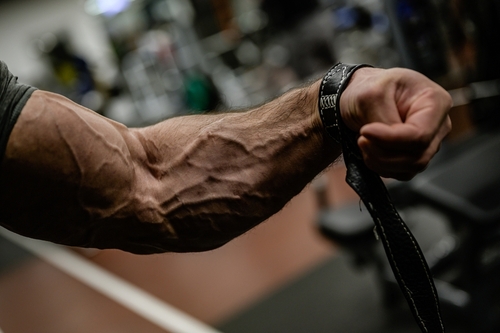
What Can Cause Vascularity?
When it comes to creating vascularity in the body, the good news is that it isn’t particularly strenuous or difficult. The process for causing vascularity largely breaks down to having a reduced amount of body fat compared to your overall muscle mass. This is because, in truth, vascularity is simply making the superficial veins (which everyone has) more prominently displayed. Arguably, the process for causing them to appear isn’t too dissimilar to getting into shape (especially since many of the same steps are required).
Still, there are a few factors that may make the process naturally easier for one person over another. Many of these factors deal with your genetics and how your body is structured. Below are just a few things to consider for why you may or may not find vascularity an easy objective to obtain even despite being relatively fit or muscular.
Bodyfat Percentage
The first thing you’ll want to always take into account is the amount of body fat you have on your body. This is always, always, always going to be the most important factor when it comes to having a high amount of vascularity in your veins. This is because the superficial veins are located within the upper fatty layer of the skin. As such, the more fat present in the body, the more “encased” these veins will be and the less vascular they can or will be.
While this problem is fairly obvious and easily understood for those that are overweight or with objectively high amounts of body fat, it can be a bit more complex for those with lower amounts of body fat. Generally speaking, you’re most likely going to notice some vascularity from 15% body fat and below, with it starting to show at that point and becoming more prominent from 12% and below.
If you aren’t seeing as much vascularity as you’d expect once hitting these lower body fat levels, the answer lies in some of the other listed factors below, namely genetics, amount of muscle mass, or even your existing hormone levels at the time.
Muscle Mass
After body fat percentage, the next area you’ll want to pay attention to is your overall muscle mass. The reality is that, while body fat is important, it won’t account for much on its own. Take, for example, people that are malnourished or starving. In either of these cases, despite having an incredibly low percentage of body fat, they may have very little vascularity present, and even when they do, it’s often very unflattering.
Superficial veins, while existing within the upper fatty layer of the body, also sit on top of your lean muscles. This is why, when flexing or straining, you’re likely to see them pop now and again. By having a higher muscle mass, you not only make it easier to see these veins even if you have a slightly higher bodyfat percentage, but you are far more likely to cause these veins to protrude out from the skin if you have the aforementioned 15-12% or fewer amounts.
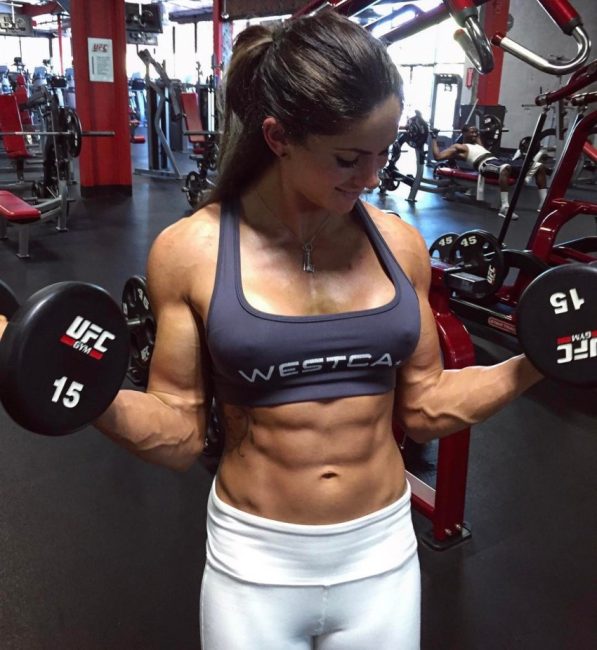
Diet
While a quality diet is essential for vascular veins in general (due to a reduction of body fat), you’ll want to ideally focus on certain types of foods that contain nitric oxide. These dietary nitrates signal to the body the need to vasodilate, which is needed for high amounts of vascularity.
We go into these in more detail later, but your diet should ideally have high amounts of red meats (beef, lamb, goat, or pork) as well as nuts, seeds, and cruciferous “leafy green” vegetables.
Vasodilation
Vasodilation specifically refers to the widening of blood vessels. Meant as a side effect of larger and more oxygen-rich blood cells being fed to active muscles, they are the process of essentially “making room” to accommodate these blood cells and prevent any form of blockage from occurring.
As a result of this, the more vasodilation that occurs in the body, the wider and more pronounced these blood vessels and veins will appear, causing an increase in overall vascularity.
Genetics
Lastly, good ole genetics always plays an important role when it comes to how the body operates. And while it is seen in the more plain and obvious ways, it can also determine just how vascular your veins become even if you’ve worked on all of the other factors listed above. As an example, for individuals that have a less prominently laid out vein placement, this can result in no vascularity in all the places you’d expect (arms, chest, legs, etc.) while seeing a surprising amount in other more hidden areas, such as under your arms or on your lower back.
Other issues can include superficial veins that aren’t as close to the skin as what would generally be expected. As mentioned earlier, even if you have a lower body fat percentage and a fair amount of muscle mass, that doesn’t necessarily guarantee you’ll have a ton of vascularity. If, as an example, your veins are deeper under the skin, you may need considerably less body fat and more muscle mass to get the same level of vascularity as someone else.
Ultimately, while there are a ton of things that can factor into your veins standing out, the biggest cause will always be the thing you have the least amount of control over, and that’s your genetic makeup. Still, by understanding that that is in play, you can focus on having a stellar physical body without stressing whether or not the veins pop as you want. Simply put, for some people, it’s either going to show (or not show) no matter what you do, so always keep that in the back of your head.
Is Vascularity Even Healthy?
When it comes to vascularity, the good news is that it is neither expressly good nor bad. Remember, all that is happening here is that the superficial veins in your body stand out more and are a bit more prominently displayed. It’s important to keep this in mind as it helps determine exactly what is happening in the body outside of what you are looking for.
Another way of putting it is that vascularity in and of itself plays no distinct role on its own from a physical standpoint and is entirely aesthetic. It’s pretty much the same as growing a beard or having long fingernails, the one exception being that you have to put your body in a certain state for them to properly show itself.
And therein lies the crux to the “health” question of being vascular. While being vascular has no direct effect on one’s health (good or bad), it is often a reliable indicator of a person’s health as it can generally only be achieved by a low body fat percentage and a high amount of muscle mass.
The Dangers Of Vascularity
Of course, just as many health indicators can come with being vascular, there are also a few potential red flags and pitfalls you’ll want to be aware of. The two main things to consider are the challenges of high blood pressure and dealing with extremely low levels of body fat.
Blood Pressure
While low body fat percentage and high muscle mass can result in vascularity, so too can increased blood pressure. This is largely due to the nature of your veins and blood vessels in the first place. The way it works is that your arteries pump blood out from your heart to the various parts of your body while veins pump that blood back towards the heart. This creates a synergistic flow where one side helps the other.
The challenge comes when there is an imbalance between blood leaving the body compared to blood entering. This process can result in excess pressure. This pressure, when to a high enough degree, can result in an exposed vein that is incredibly similar to a vascular vein.
The problem with this is that, on its face, someone suffering from high blood pressure could easily be misled into believing they have vascular veins. The key is to be aware of the other potential symptoms and signs. If, as an example, you are suffering from dizziness, constant headaches, shortness of breath, or facial flushing, these can be a sign that you are suffering from high blood pressure, especially when paired with prominently displayed veins.
That said, it’s always important to get your numbers checked. This is especially true if you have potential vascularity. High blood pressure is a largely symptomless killer, with many of the aforementioned issues happening right before things become potentially life-threatening. Vascularity, while generally evidence of great health, should always be followed up with to ensure it is what you think it is.
Extreme Low Levels Of Bodyfat
The second point to consider is body fat percentage. While you want lower levels of body fat you also don’t want to go crazy. Pretty much anything between 6 and 15% is the top spot for your body. Anything lower than that puts you at risk of burning essential fat. This can result in heart issues, low energy levels, lower testosterone, weaker bones, and weathered wrinkly skin.
It’s important to keep your body fat percentage low, but always within reason and never below 6%. If you’re between 6 and 10% body fat and still not seeing a lot of veins bulging, you may want to increase your muscle mass.
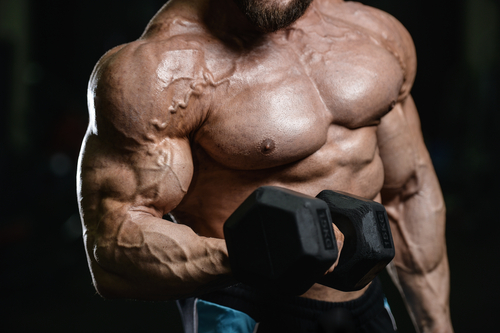
Vascularity Vs. Vascular Disease
A hidden third factor that you’ll want to be aware of is an entirely separate thing known as “vascular disease” or “vascular condition”. Whereas vascular veins are the result of superficial veins prominently displaying themselves as a result of widening out, vascular disease is a very serious health condition that can have a serious impact on your overall health.
The most common and well-known form of vascular disease is called “varicose veins”. Interestingly, at first glance one may easily mistake it for vascularity. This is because, like being vascular, varicose veins are the result of the veins enlarging. The difference is that, where vascularity comes from superficial veins widening, varicose veins are the result of veins enlarging due to a malfunction of the different valves. This valve malfunction can result in blood failing to flow freely, thus pooling in the veins and causing them to enlarge and strain.
Varicose veins, while also fairly prominent, is very different from someone who is vascular even from a visual aesthetic standpoint. Varicose veins are usually quite dark in color while also appearing incredibly bundled up, creating something that looks similar to a series of tangled webs. They also can be quite distracting to the individual, often having an itchy, burning sensation that can even become painful at times. Again, all of these symptoms are the result of blood pooling along the veins with a dramatically slowed flow throughout the body.
Vascular veins, on the other hand, run very smoothly and clearly throughout the body, none of which interlocking with other veins. They will also rarely have any sort of distinct blue color or any noticeable sensation (such as itching or burning feelings).
All in all, while they may appear similar at first glance, the two are very different in virtually every way imaginable. This is also true for nearly all other vascular diseases or conditions. Simply put, if you feel “off” to any degree, you’re not dealing with vascularity but vascular disease.
Ways To Increase Vascularity In The Body
Whether you’re someone who’s been in the gym for years upon years now or someone that is still a beginner, the desire to get vascular-showing veins is a huge point of interest. When it’s all said and done, the main way just about anyone sports vascularity is by reducing their body fat and increasing their muscle mass.
Still, depending on your situation, these two methods may not be enough. Luckily, there are several additional factors you can implement to improve your chances of “getting vascular”.
Method #1. Reduce Bodyfat
As before, let’s run down the basics since, for many beginners, “reducing body fat” can be a largely vague and nebulous term. When we say you need to lose body fat, that means you’re going to need to either put yourself in a caloric deficit (i.e., dieting) or eat specific foods that cause you to burn fat more efficiently.
When you lose body fat, you will also reduce the amount of subcutaneous fat that lies between the veins and the skin, which will make your veins more pronounced.
Dieting
Standard dieting is, well, standard dieting. This is simply the process of reducing the number of calories that you consume in relation to the amount that you burn, either with or without exercise. The ideal setting is to be in a calorie deficit of between 300 and 500 calories as this ensures that you are burning fat instead of muscle. You’ll also want to consider taking a protein powder shake, as protein is known to help retain muscle, making it less likely to be burned instead of fat.
Fat-Burning Protocol
The alternative method is by going on a fat-burning protocol. These are often more “way of life” changes and thus are easier to maintain compared to “dieting”, which generally has an end date in mind.
One of the most effective protocols in this regard is the ketogenic protocol. Also known as the ketogenic diet, “going keto”, or living a ketogenic lifestyle, this is the process of consuming virtually no carbs or sugars while also taking in moderate amounts of fat and higher amounts of protein. Not only does this have the aforementioned benefit of retaining your muscle, but it also trains your body to focus on burning fat as an energy source instead of sugar.
Another effective fat-burning protocol is known as intermittent fasting. Rather than strongly dictating “what” you eat, this protocol instead focuses on “when”. As with the ketogenic protocol, this offers a fair amount of leniency when it comes to calories in vs. calories out while still ensuring that you are burning fat more often than not. Here, it’s done with a brief “feeding window” that dictates when you can eat as well as a much larger “fasting window” where you can’t. As an example, you could have a feeding window of 8 hours while fasting for 16. One great method of fasting is called OMAD or “one meal a day”, which takes the intermittent fasting process to the extreme.
Regardless of what method you use, you must make a point of reducing body fat as opposed to simply “losing weight” (which is what most dieting protocols focus on) if you want your veins to become vascular properly.
Method #2. Increase Muscle Mass
In addition to fat loss, remember that the other huge factor that plays into becoming vascular is building as much muscle as you can. The larger your muscles, the more the superficial veins are pushed to the surface and made more pronounced. Not only that, but more muscle also causes the skin to slightly tighten up, making the veins even more visible. It’s also why those with lower body fat and larger muscles seem almost about to tear out of their skin. While I wouldn’t necessarily suggest going to that length, gaining more muscle is going to be key to improving vascularity.
The good news is that pretty much any intense strength-based exercise will strengthen and improve muscles. You’ll ideally want to perform resistance training and weightlifting to see the most results, but less-intensive methods can also progressively show results after a time. Your best bet is to make a point of training each muscle two times a week while working with moderate loads and reps
You should also make a point of consuming protein and protein-based supplements. Eating foods like red meat and nuts while also taking protein powders can ensure your muscles are always actively being fueled. This will keep them either in the repair and growing stage or the stressed and breaking down stage. Both of these stages prevent hypertrophy from occurring so they should be achieved as often as possible.
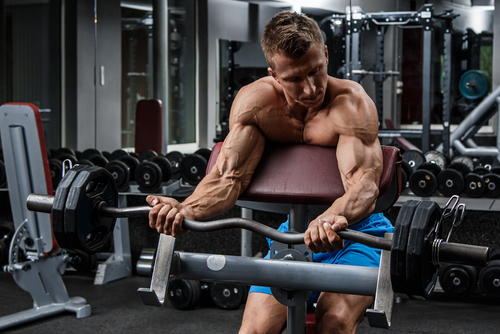
Method #3. Include Cardiovascular Exercises
Cardio, on its own, may not be enough to see some huge results. However, when included alongside many of the strength-based exercises, it is surprisingly effective at increasing capillary density and improving vascularity. The key is keeping things at a steady state with a lowered intensity as opposed to anything too crazy.
Your best bet for increased vascularity is hour-long steady-state cardio exercises that keep the body active while not too stressed or strained. High-intensity interval training (HIIT) is also noted for improving vascularity, though you’ll want to be particularly sparse when including this, especially if you have already been depleted from the much more effective weight training.
Method #4. Use Blood Flow Restriction Training
Remember what we talked about earlier with high blood pressure causing the veins to become more exposed and vascular due to an imbalance in blood flow? Well, as it turns out, you can artificially create that same phenomenon through something called blood flow restriction training. This is the process of restricting the blood flow to your muscles while lifting through the use of wrapped bands. These wrapped bands essentially form a semi-tourniquet around the muscles, cutting off blood flow and causing the blood vessels to “blow up” and become more visible.
Blood flow restriction training is an incredibly effective way of having a more vascular look. However, it must be done under supervision and guidance, especially during the first few sessions. This is because you are performing light metabolic damage to the muscles and, if you aren’t careful, can potentially cause a blood vessel to “pop”, which can be both incredibly painful as well as harmful to the body overall.
Method #5. Supplement Your Diet
Lastly, you want to make a point of supplementing your diet. This is true regardless of what plan or protocol you’re following. You can use specific foods or invest in capsule supplements. Ideally, you’ll want to use both methods since they all can have dramatic effects on the body in a powerful way.
Vegetables
Starting off our list, vegetables are great for vascularity, namely for their production of nitrates, which convert into vasodilative nitric oxide. This includes foods like spinach, kale, cabbage, as well as arugula [1].
Other foods, like both beets and garlic, have also been shown to increase nitric oxide levels in the body. Beets are similarly high in dietary nitrates [2] while garlic has been shown to boost nitric oxide levels through the activation of nitric oxide synthase [3].
Protein
Whether we’re talking about red meats, nuts & seeds, or various protein powders, protein plays a huge factor in someone becoming vascular.
Various meat protein sources (red meat, poultry, and seafood) as well as both nuts and seeds all are noted as having a big impact on nitric oxide production. Meats in particular carry an important coenzyme known as CoQ10, which has been shown to improve athletic performance while also preserving nitric oxide in the body [4] [5]. On the other hand, both nuts and seeds are high in l-arginine, which has been shown to lead to higher levels of nitric oxide in the body [6].
Protein powder acts more as an indirect method of improving vascularity. Here, the supplement works to retain and build muscle while also increasing one’s overall strength [7]. This ultimately culminates in more muscle which results in more vascularity of the veins.
Fruits
In addition to meats and vegetables, various fruits also offer a lot of benefits to the body, particularly when it comes to nitric oxide. Fruits like watermelon, pomegranate, and various citrus-based fruits all are shown to improve the production of either nitric oxide itself or nitric oxide synthase, an enzyme that later creates and produces nitric oxide [8] [9] [10]
Dark Chocolate & Red Wine
It may seem a bit odd at first glance, but both dark chocolate and red wine have a ton of positive effects on the body, especially when it comes to producing nitric oxide and vasodilation. In one 15-day study, it was shown that participants showed higher levels of nitric oxide in their system compared to those that didn’t [11]. Similarly, it was also shown to reduce both systolic and diastolic blood pressure, actually making you healthier as a result. Dark chocolate has also been noted to increase blood flow and brain function [12] while also decreasing heart disease [13]. All of these things, while not directly correlated to vascularity, do improve your physical performance and allow you to increase your muscle mass, thus indirectly having an effect.
Just as well, red wine also has many physical benefits, one of which is the increase in nitric oxide and increased blood flow. In two separate studies, it was shown that cells treated with red wine increased the levels of nitric oxide synthase production [14] [15].
Creatine
Starting officially on the supplemental side of things, creatine is largely unique in its benefits to the body and vascularity as a whole. Unlike nitric oxide foods and supplements, it doesn’t directly influence vasodilation. On the other hand, it doesn’t directly influence muscle growth the same way that protein does.
What creatine does do is fuel the body’s muscles, allowing them to push harder and go longer without suffering from fatigue [16]. It also helps them recover faster [17]. All of these things result in you being able to get more out of your workouts, thus indirectly playing a factor in your muscle growth. As already established, the more muscle growth you have, the more vascular you will become.
Ultimately, creatine is just a really good supplement to take if you’re looking to improve your physical body. It’s pretty much right up there with protein powder and should be part of every gym-goer’s pantry.
Related: 10 Best Supplements to Increase Vascularity
Nitric Oxide Boosters
Earlier we talked about nitric oxide and its importance in signaling your body to vasodilate. You can get this effect from many of the above foods listed, yes. However, you can also get many of these effects when taking a supplement to increase vascularity and veins.
Nitric oxide boosters, while not one of the most popular supplements on the market, are pretty easy to get ahold of once you know what to look for. The most common nitric oxide booster supplements are those with L-arginine and L-citrulline in them.
Both L-citrulline and L-arginine work as synergistic amino acids in the body that produce more blood flow and vasodilation. It’s probably more accurate to say that L-citrulline is just a more composed version of L-arginine, which is a more composed version of nitric oxide. As such, both amino acids are essential in improving your overall gym performance as well as helping improve vasodilation, and thus vascularity [18].
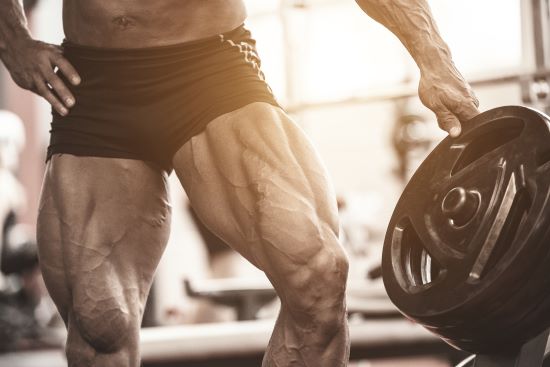
Thermogenic Supplements
An interesting inclusion comes by way of thermogenic supplements. One of the ways to improve vasodilation is by raising your body’s internal temperature. Interestingly enough, this is also a great way of shedding fat and increasing your metabolism. Thermogenic supplements are often used for many fat-burning supplements, making them a great option for those also looking to reduce body fat percentage, essentially offering a double-whammy effect.
Some of the more popular thermogenic supplements include various ingredients including caffeine, capsaicin, bitter orange, yohimbine, and Garcinia Cambogia.
- Caffeine is an adrenal stimulant that burns calories while releasing fatty acids into the bloodstream to be used as energy [19]
- Capsaicin is considered the “spice molecule” due to its role in making chili peppers spicy. As such, capsaicin works as an impressive thermogenic substance, burning fat more effectively in the body while also reducing appetite and increasing metabolism and energy [20] [21]
- Bitter orange contains a naturally occurring compound known as synephrine. This compound has been shown to improve metabolism and help burn calories both on its own and when used alongside other herbal supplements [22]
- Yohimbine is a thermogenic substance derived from the African Yohimbe tree and has proven effects on weight loss when combined with proper exercise [23]
- Garcinia Cambogia is another weight loss supplement ingredient, coming from a tropical fruit extract. It contains hydroxy citric acid (HCA) and has shown evidence of reducing weight when taken over a 2-12-week period
You’ll want to take a relatively small dose to gauge your body’s reaction before progressively increasing the amount.
In Closing
It’s important to understand that vascularity, on its own, doesn’t mean much and is entirely meant as an aesthetic sign that your physicality is at its peak. In that case, it’s not too dissimilar to getting an 8-pack or being able to crush an apple with your bare hands. While they are clear signs of impressive physique, they shouldn’t be all that you’re striving for at the sacrifice of everything else. Start small and slowly progress, especially if you’re just starting. Make it a goal to hit 15% body fat while adding on a few extra pounds of muscle.
Bulging veins are the result of a strong, capable, and disciplined body. It’s essentially the reward for getting in the best shape of your life. It isn’t the intended goal, but a byproduct of that goal. If you move with that in mind, you won’t be too stressed out if you’re not immediately seeing bulges on your body any time soon. Not only that, but by making a powerful physique your main focus, you’ll be putting yourself in the prime position to become vascular.
References
- Effects of a nitrate-rich meal on arterial stiffness and blood pressure in healthy volunteers – PubMed (nih.gov)
- Acute ingestion of beetroot juice increases exhaled nitric oxide in healthy individuals – PubMed (nih.gov)
- Potent activation of nitric oxide synthase by garlic: a basis for its therapeutic applications – PubMed (nih.gov)
- The effects of coenzyme Q10 supplementation on performance during repeated bouts of supramaximal exercise in sedentary men – PubMed (nih.gov)
- Coenzyme Q10 Therapy – PMC (nih.gov)
- The Association of Dietary l-Arginine Intake and Serum Nitric Oxide Metabolites in Adults: A Population-Based Study – PMC (nih.gov)
- Dietary protein recommendations and the prevention of sarcopenia – PubMed (nih.gov)
- Acute ingestion of citrulline stimulates nitric oxide synthesis but does not increase blood flow in healthy young and older adults with heart failure – PubMed (nih.gov)
- The influence of pomegranate fruit extract in comparison to regular pomegranate juice and seed oil on nitric oxide and arterial function in obese Zucker rats – PubMed (nih.gov)
- Long-term vitamin C treatment increases vascular tetrahydrobiopterin levels and nitric oxide synthase activity – PubMed (nih.gov)
- Effect of dark chocolate on nitric oxide serum levels and blood pressure in prehypertension subjects – PubMed (nih.gov)
- The effect of flavanol-rich cocoa on the fMRI response to a cognitive task in healthy young people – PubMed (nih.gov)
- Chocolate consumption is inversely associated with prevalent coronary heart disease: the National Heart, Lung, and Blood Institute Family Heart Study – PubMed (nih.gov)
- Red wine increases the expression of human endothelial nitric oxide synthase: a mechanism that may contribute to its beneficial cardiovascular effects – PubMed (nih.gov)
- Red wine polyphenols enhance endothelial nitric oxide synthase expression and subsequent nitric oxide release from endothelial cells – PubMed (nih.gov)
- Creatine Supplementation and Upper Limb Strength Performance: A Systematic Review and Meta-Analysis – PubMed (nih.gov)
- Effects of 4-Week Creatine Supplementation Combined with Complex Training on Muscle Damage and Sport Performance – PubMed (nih.gov)
- REGULATION OF NITRIC OXIDE PRODUCTION IN HEALTH AND DISEASE – PMC (nih.gov)
- The effect of caffeine on energy balance – PubMed (nih.gov)
- Acute Effects of Capsaicin on Energy Expenditure and Fat Oxidation in Negative Energy Balance – PMC (nih.gov)
- Capsaicinoids: a spicy solution to the management of obesity? – PubMed (nih.gov)
- A Review of the Human Clinical Studies Involving Citrus aurantium (Bitter Orange) Extract and its Primary Protoalkaloid p-Synephrine – PMC (nih.gov)
- Yohimbine: the effects on body composition and exercise performance in soccer players – PubMed (nih.gov)
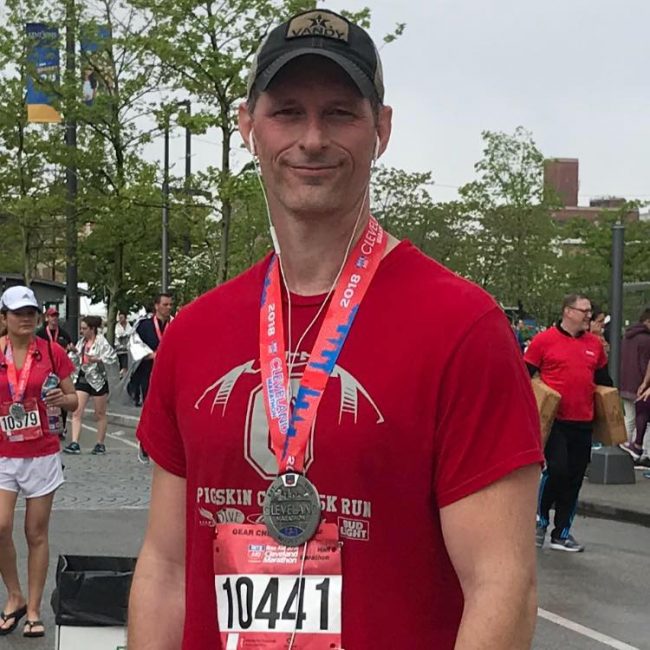
Ryan is a former college wrestler and lifelong fitness fanatic with over 25 years in the industry. He’s run half marathons, tackled mud runs, placed in body transformation contests, and coached everything from wrestling to girls’ soccer.
Along the way, he’s tested hundreds of supplements and built a deep well of supplement knowledge. His work has appeared in Muscle & Strength, Testosterone Junkie, The Sport Review, and more. Today, he’s the editor-in-chief of this site, still training hard and helping others reach their goals. Connect with him on LinkedIn below.

